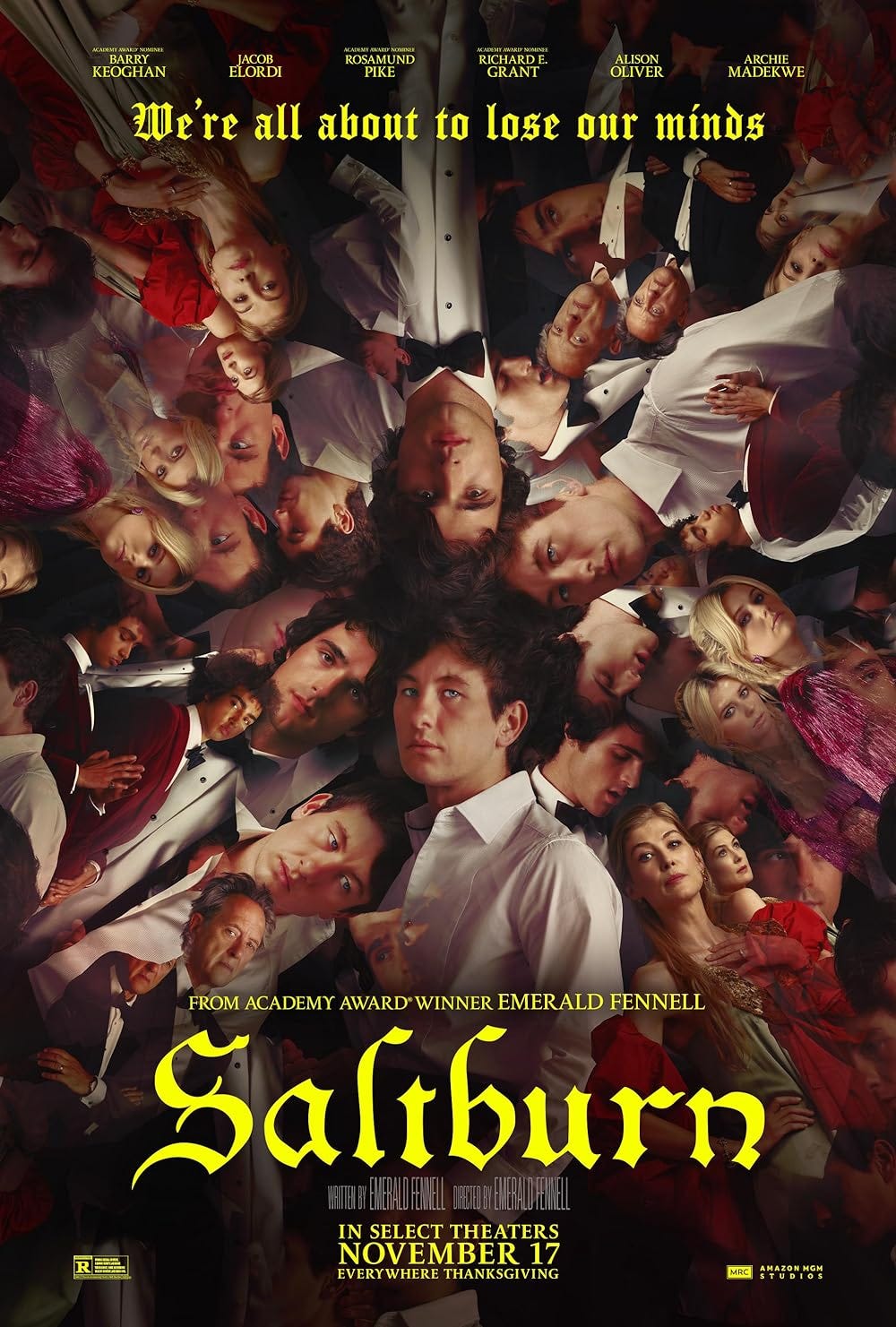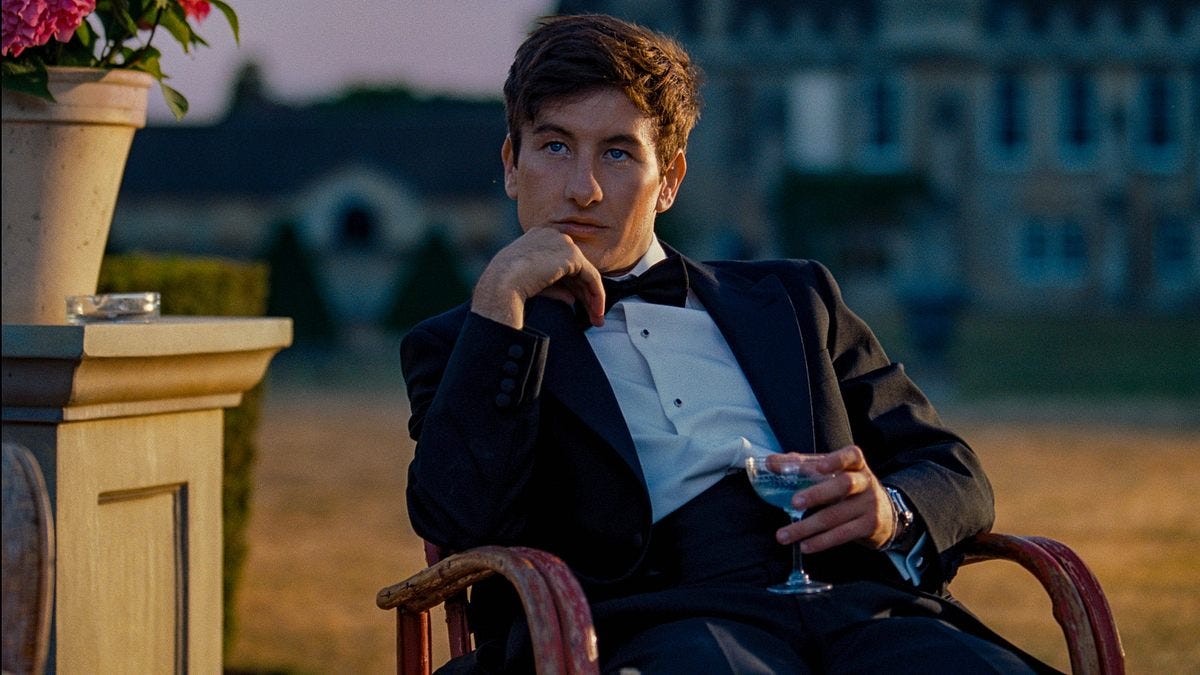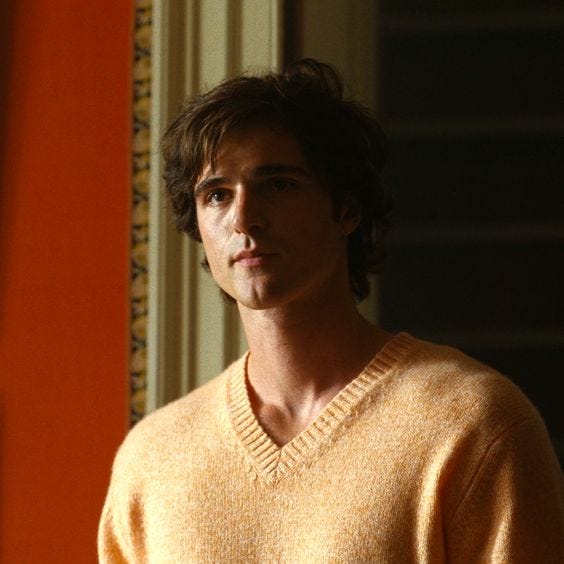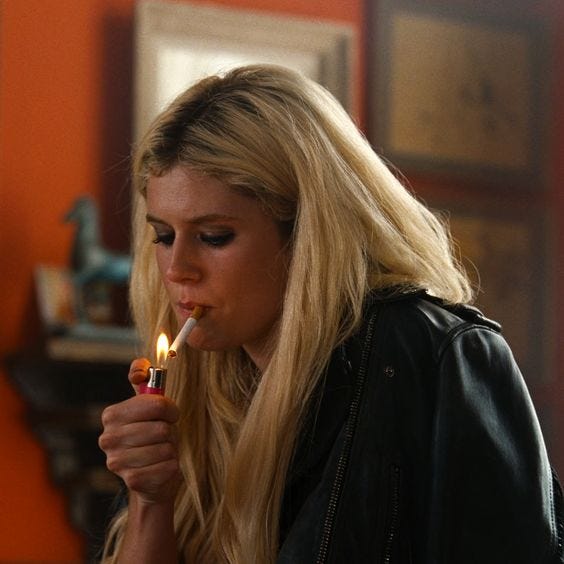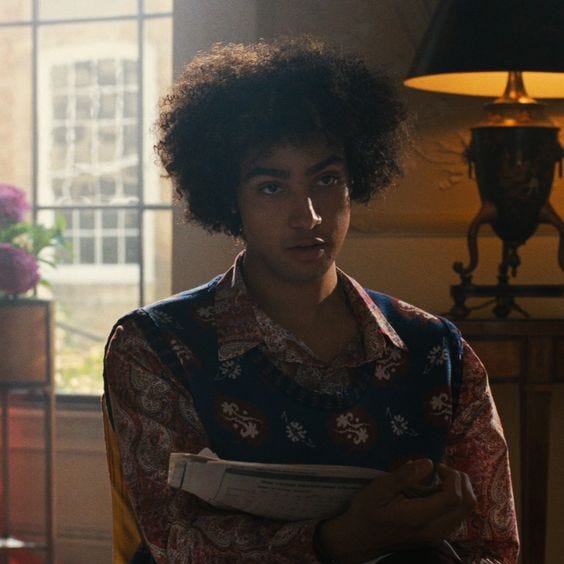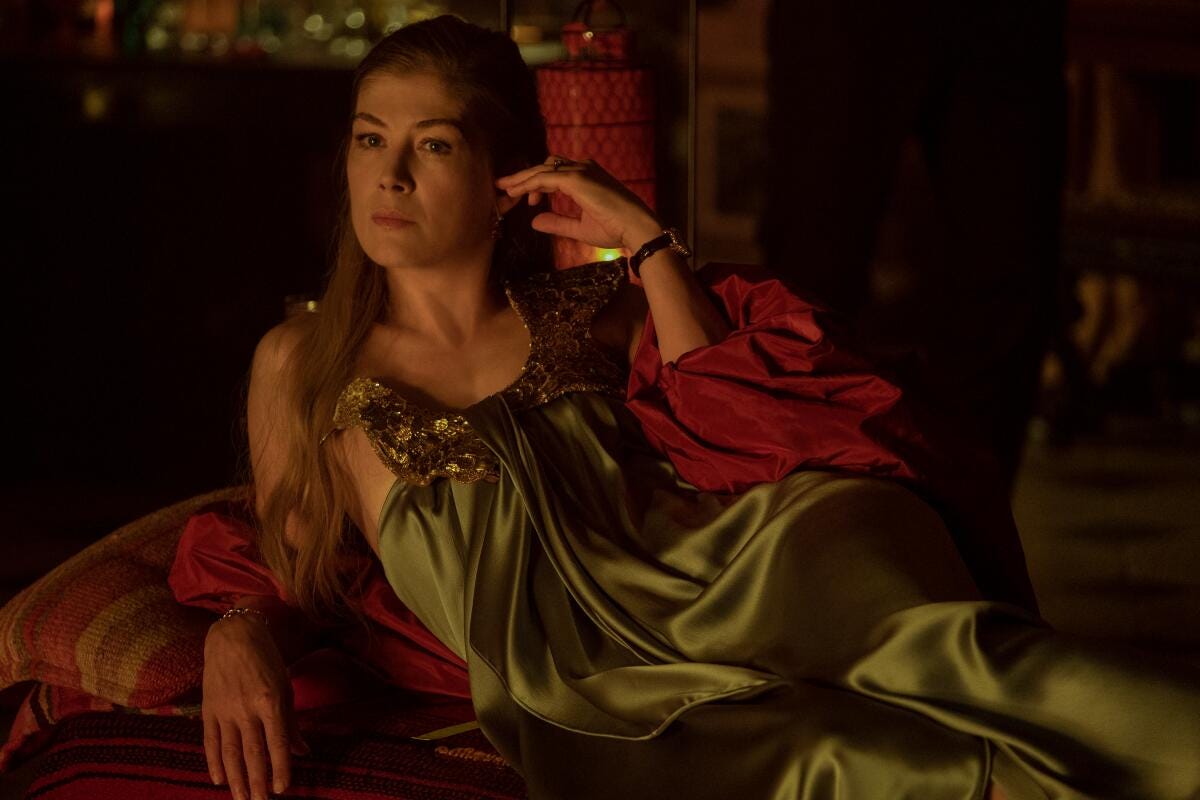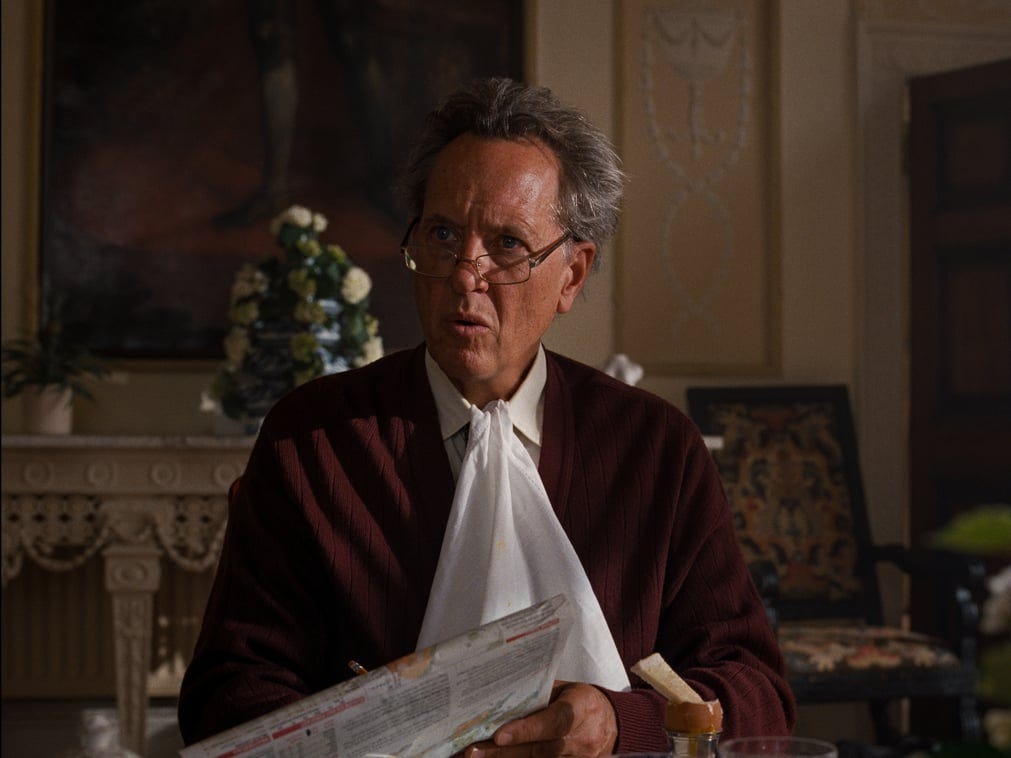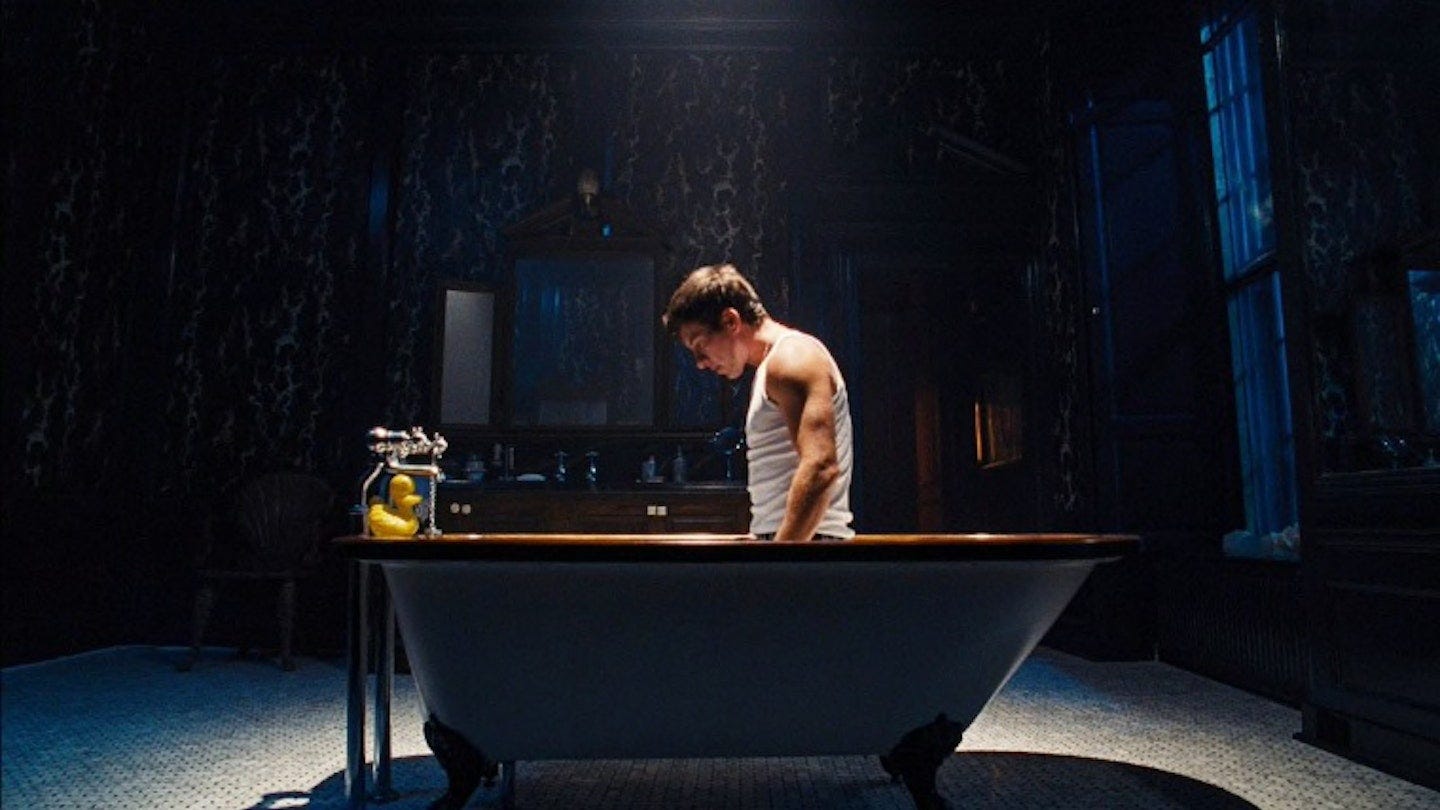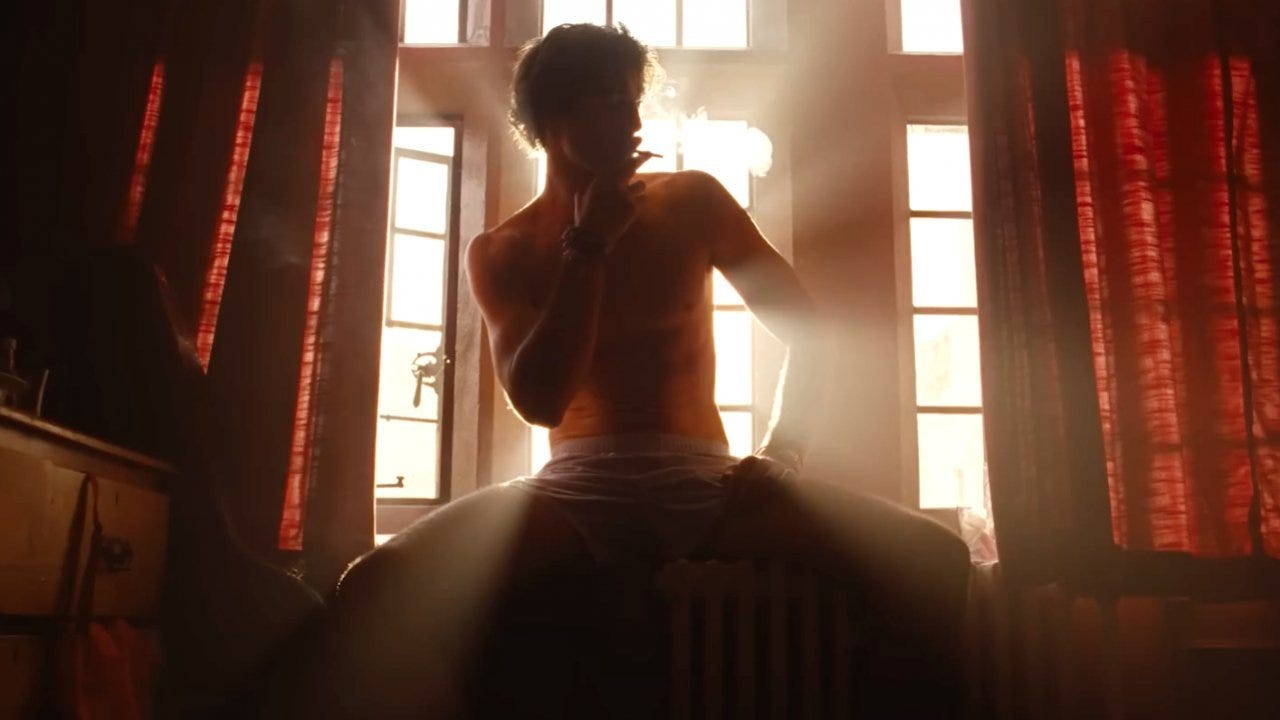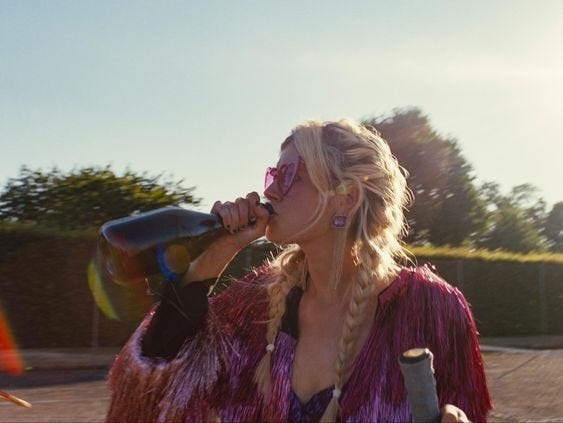So… I Watched Saltburn And Suddenly My Will to Live Has Been Restored.
Eh, not really, but let’s pretend for a second.
A new deep dive that borders on a mild case of mental derangement? That’s right, you read the title. After weeks marred by sadness, spiralling and self-doubt, I guess all it took was a new hyperfixation in the form of a visually pleasing movie and just like that, all in life is right once more – well, not really, but you get the allegory. In a fit of cinematic obsession, I found myself rewatching Emerald Fennell’s Saltburn multiple times in the span of merely five days, and I loved every damn second of it. In true madness fashion, I’m therefore inviting you on a journey through the many thoughts that have occupied my mind since. Naturally, I’m going to pretend to be a film critic of some sort and make this experience my personality from here on out, alright? Great, let’s get into it then! This little essay (if you can even call it that) will walk you through a variety of aspects and themes: characters, cinematography, costumes, soundtrack, sexuality, symbolism, Greek mythology – and so, so, so much more.
Also, I think it goes without saying, but if you haven’t seen the film yet, please do yourself a favour and do so – I wouldn’t want you robbed of the joy that is watching Saltburn for the very first time. With that being said, let the chaos unfold.
Your Last Warning
We’ll kick things off with a swift plot recap to refresh your memory: Saltburn follows Oliver Quick’s manipulation tactics as he forms an obsessive friendship with Felix Catton, his extremely wealthy and popular Oxford classmate. A series of events leads him to spend the summer at Felix’s opulent family estate, “Saltburn” – hence the name. There, Oliver slowly creeps into the lives of each character, resulting in tragedies such as Felix’s death, Venetia’s suicide and later on the demise of both Sir James and Elspeth. The film concludes with Oliver’s revelation of orchestrating the entirety of devastating happenings to secure his position as the heir to “Saltburn” and the vast Catton fortune.
Now, before we delve any deeper, it’s time to take a look at the cover art. As you can see, the movie was directed by Emerald Fennell (a true Oxford alumna, much like Rosamund Pike) and brought to life by LuckyChap Entertainment aka Margot Robbie’s production company – so we’re off to a great start. The poster depicts many versions of each character, with Oliver taking centre stage. The different iterations almost make it seem as though you’re looking through a kaleidoscope. The visual of mirroring will come into play later on in the film, so watch out for that. What I’ll leave you with is, that the portrayal of Oliver and Felix might suggest a literal parallelism or perhaps deliberate opposition. Could this indicate that Oliver is trying to morph into Felix after (spoiler) killing him (The Talented Mr. Ripley style) or is there something entirely different going on – I’m not quite sure actually, I suppose that’s up to everyone’s individual interpretation.
Soundtrack: A Mid-00’s Dream
Immersing itself seamlessly into the mid-aughts-00s British ambience, the film’s soundtrack features a colourful mix of nostalgic classics including songs by MGMT, Bloc Party and Arcade Fire – what more could one wish for? Noteworthy is the usage of MGMT’s Time to Pretend as the sonic backdrop to a fun summer montage of Oliver, Felix, Venetia and Farleigh at the Saltburn residency – an interesting title considering Oliver is literally the biggest liar to have ever existed, but I digress. The brilliance doesn’t end here, however. We also get an ending scene that single-handedly rekindled my appreciation for Sophie Ellis-Bextor’s Murder On The Dancefloor – but more than later. Let’s just say that the soundtrack has been on repeat for a couple of days by now.
Talking About The Main Six… And Losing My Sanity Over Barry Keoghan
How do I even begin to give justice to the complexity of the characters this film offers us? I mean, there are simply too many of them to properly dive into their respective arcs. Therefore, I’ll keep each train of thought to a minimum and give you my opinion on the following six mains: Oliver, Felix, Venetia, Farleigh, Elspeth and Sir James – though I probably could go on for hours.
Oliver Quick (Barry Keoghan):
Confession: prior to Saltburn, the name Barry Keoghan wasn’t exactly on my cinematic radar per se. However, this movie served as an awakening deep inside of me, the realisation that he deserves all the recognition he’s receiving right now (though he was snubbed at the Golden Globe…) and more because his portrayal of Oliver was insane. Throughout the entirety of the film, Barry manages to play at least five or six different versions of Oliver as he perfectly adapts his personality to fit each character around him. I don’t want to like him, and sometimes I don’t, but just as he charms and manipulates the residents of Saltburn, his character has that same effect on us, the audience.
While we’re on that note, let’s talk about my own growing obsession with Barry Keoghan, the man, the legend himself – no, not quite to Oliver’s level of intensity, obviously, but enough to engage in some pretty extensive online research. Turns out the 31-year-old actor has lived quite an interesting life so far. For example, did you know that Barry spent a good portion of his childhood in 13 different foster homes because he unfortunately lost his mother at the tender age of 12. In 2021, shortly before filming The Banshees of Inisherin, Barry contracted necrotising fasciitis in his left arm – a rare and life-threatening flesh-eating disease, which often leads to amputations. Luckily, he recovered without major damage. Only a year later he also became a father – that one really caught me off-guard for some reason. And in the latest twist, he’s apparently dating Sabrina Carpenter – love that for him (and her). Right, let’s return to the main crux of this essay: Saltburn.
Felix Catton (Jacob Elordi):
I’d go as far as saying that Felix is probably one of the audience’s most-liked characters in Saltburn. Perhaps it’s the stark contrast to his contemporaries, portraying the wealthy, popular kid as one of the few sincere and genuinely good-hearted souls – or it might be the simple fact that he’s played by Jacob Elordi. Either way, I agree in a way. Admittedly, a second viewing of the film highlighted his saviour complex tendencies and occasional slips into less-than-angelic behaviour. But then again, how could anyone not like Felix? Even the camera, serving as Oliver’s point of view, captures him in an almost godly light – that would be enough to put any viewer in a trance.
Venetia Catton (Alison Oliver):
In many ways, Venetia embodies the epitome of what I aspire to be. Picture an unpolished, partying it-girl straight out of the noughties – think Poppy Delevigne, Alexa Chung or Georgia May Jagger. That instantly turns her into a personal favourite of mine. There’s a romantic tragedy to her character, combining an impeccable fashion sense with great comedic timing. From the moment I saw that tennis montage, I knew Venetia had my heart – her outfit paired with the backdrop of MGMT was simply too endearing. Oh, and don’t even get me started on that moth monologue near the end – pure cinema right there.
Farleigh Start (Archie Madekwe):
Farleigh grew to be a super interesting character and one whom I definitely didn’t feel a lot of sympathy for during my initial watch – in my mind, he seemed like an unprovoked jerk right from the start. However, my revisit made me understand some of his frustration with Oliver – well, a tiny amount of it at least. Does he still annoy me? For sure, but the subtle parallels between Farleigh’s and Oliver’s “intruder-ways” intrigue me, nonetheless.
Plus, the other day I stumbled upon the fact that the stylist’s mood board for the character Farleigh consisted exclusively of Corbin Bleu pictures during his High School Musical days – I mean, come on, that’s kind of iconic. Also, quick side note: Archie Madekwe and Jacob Elordi being the same height is a piece of information that I find particularly hard to fathom.
Elspeth Catton (Rosamund Pike)
Ugh, Elspeth, much like Venetia, channels a very specific type of mid to late-00s British woman to me. In comparison to her daughter, I’d say that she leans more into the filthy rich yet weirdly elegant boho-chic side of things though – Kate Moss and Sienna Miller come to mind. If memory serves me right, she was a model turned socialite, wasn’t she? That has to count for something. To summarise: I love Elspeth Catton, I love her dryness and impeccable style and I specifically love Rosamund Pike in that role – the end.
Sir James Catton (Richard E. Grant)
To be fair, I think Sir James is the character out of the six about whom I have the least to say – so I’m going to keep it brief. He was an endearing, funny character. Truth be told though, I would have loved to have a tad more information on how things took a turn in the gap between Oliver’s departure and Sir James’ death (actually all up until Elspeth’s passing if I’m being honest). Did he die of natural causes or was it Oliver’s doing? I’m leaning toward the first option but I guess we’ll never really know.
Yes, THOSE Scenes Were Actually Crucial To The Plot
Alright, let’s talk about it – THOSE scenes that linger in most people’s minds when discussing this movie. Was I gagging a bit when Oliver stuck his tongue down a dirty bathtub drain? Absolutely, 100%. Yet, as strange as it was, I found significance in it that, in my humble opinion, enhanced the plot – let me explain. Beyond the deliberate shock factor, if you simply analyse it enough, you can find meaning in essentially anything. Throughout his entire stint at Saltburn, Oliver uses his sexuality to manipulate the people around him – call him a bit of a whore if you will. Strikingly, the only person he desires but can’t pursue in that manner is Felix (well… that is until he quite literally fucks his grave, I guess). Oliver’s controversial scenes perfectly display his obsessive desire – and most of the time he ends up getting exactly what he wants. In a way, he’s consuming the people around him, draining them of life – like a metaphorical vampire (iykyk). That’s why, personally, I feel like those three scenes make perfect sense with how the plot progresses. Plus, they managed to radiate just the right amount of weirdness necessary to create a certain buzz around the film’s release.
Caring About Contemporary Costumes
To capture the authentic style of the mid-aughts, Saltburn’s costume designer Sophie Canale sourced the majority of the movie’s wardrobe through private second-hand retailers like eBay and Depop. Admittedly, successfully (and appealingly) replicating trends from the relatively recent past on our screen can be a tricky endeavour, given we didn’t have enough time to process our questionable clothing choices from 15 years ago and develop a sense of nostalgia for said fashion era… or did we? It’s no secret that I (and many others) have been developing an undeniable fondness for the noughties and early 2010s. Blame the speeding trend cycle, but I can’t help the fact that 2012-2014 fashion is starting to feel scarily appealing once again. But back to Saltburn.
Because if the implementation of the film’s contemporary fashion wasn’t enough already, there’s also the added joy of a (literature-themed) costume party – and let me tell you, in a movie, there’s nothing I love more than a themed party. Why? Analysing each character’s attire and forming theories on why they’re wearing what they’re wearing makes the entire viewing experience just so much better. Take Felix and Oliver for example – drawing parallels to specific characters from Shakespeare’s A Midsummer Night’s Dream opens a realm of possibilities. You could even interpret Oliver’s horns and Felix’s wings literally, with the former symbolising devilish energy and the latter signifying either Felix as an angel (from Oliver’s perspective at least) or commentating on his underlying saviour complex.

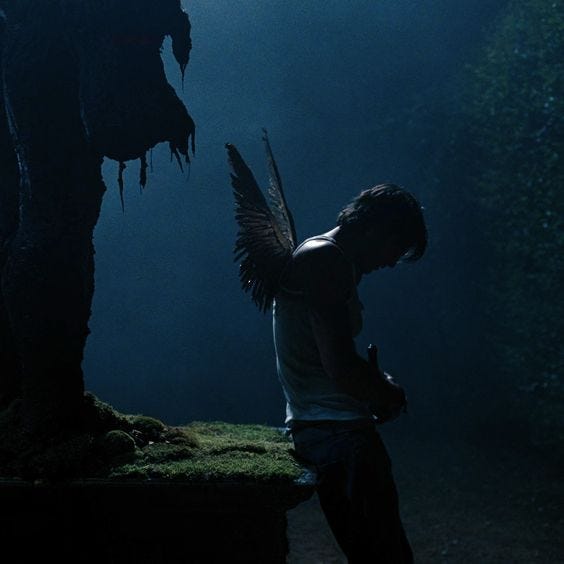
As you can see though, there are a million different ways to speculate. So, I’m just going to leave you with one last theory regarding these two – one that I clearly found online because there’s no way I would have been able to come up with this idea myself. It goes as follows: Oliver is symbolically meant to represent a white stag in a last effort to falsely convince Felix of his decency. He’s trying to reverse the roles of hunter and prey, trying to make himself seem as innocent as possible. However, when his final attempt hopelessly fails, Oliver poisons Felix below the minotaur statue. I guess in a way, all of these ideas are somehow intertwined and complement each other, so it’s hard to pinpoint, which theory I feel most drawn to. But like I always say: at the end of the day, the beauty lies in your personal interpretation of things – that’s what makes it so much fun.
Visuals, Windows & Voyeurism
If I’m being perfectly honest, I would like to delve so much deeper into the symbolism of this film – from the meaning behind water and the maze to the Catton’s “death stones” and the element of foreshadowing through doppelgangers, upon many other things. Unfortunately, there’s simply too much to analyse and not enough time – know though, that I am very much aware of all the intriguing theories surrounding this film.
Yet, with everything going on, one theme has compelled me the most: voyeurism. I’d argue that for the vast majority of the film, Oliver is portrayed as a voyeur, an observer peering into the lives of the people around him – he’s constantly gazing through windows or watching others, especially Felix, in secret from afar. I even saw online discussions suggesting that in the scene in which Oliver witnesses Felix hooking up with a girl, the burning of his cigarette resembles the red light of a recording camera – not sure if I’m seeing the vision with that one though.
This voyeuristic tendency allows Oliver to see through the Catton family and morph into the specific version of himself necessary for each character to successfully fit into their lives. That motif extends further into the movie’s recurring visuals with mirrors as a symbolic reflection and portraying multiple versions of Oliver – a bit on the nose maybe but beautifully shot, nonetheless.
Cinematography: Colour Me Amazed
And that brings us to the next section: Saltburn’s cinematography. It’s no secret that some people have labelled the movie as “all style and no substance” because no matter how you feel about the depth of the story, you simply cannot deny that the movie is stunning to look at. As viewers, we step into Oliver’s shoes, occupying the role of an outsider, spying on something we really shouldn’t have access to. This voyeuristic essence is captured through the film’s unique 1.33:1 aspect ratio, which is pretty uncommon, I suppose (I’m not a professional, sorry) – the technique leaves a small black frame on each side, as if we’re peeping into the characters’ lives through a hidden vantage point – similar to Oliver’s stalking.
Additionally, the cinematography influences the way we perceive things, such as any scene involving Felix, the object of desire. Shot from Oliver’s point of view, with carefully crafted lighting and positioning, Felix appears almost angelic or godlike on screen – a visual that’s also prevalent in Felix’s party costume aka his angel wings, I suppose.
Another detail I want to briefly touch on is the use of colours in Saltburn, most notably red and blue. Watching Saltburn for a second time made me notice the deliberate handling of colours and their deeper meaning to the plot. Red is often linked to Oliver’s angry and manipulative side and signals a shift in the narrative through drastic, slightly unhinged actions. Consider the scene where Oliver, after being excluded from the pub and peeking through the window (told you he does that a lot) returns to his dorm and encounters a blue light that transitions into red. What follows is a fabricated story about his father’s passing – a pivotal moment in weaselling his way back into Felix’s life. While he breaks the news, the curtains in the room are bright red also btw. Other standout scenes involving the same colour include the intense lunch following Felix’s death and Elspeth’s murder that takes place in the red room – all in all, great colour grading if I do say so myself.
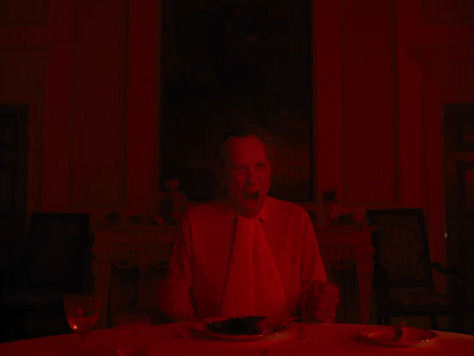
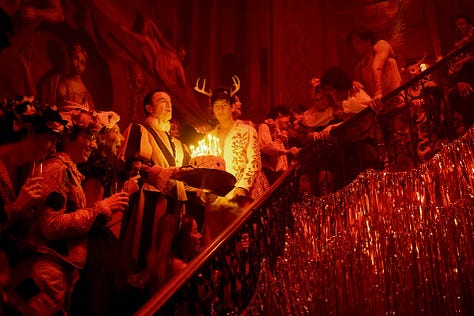
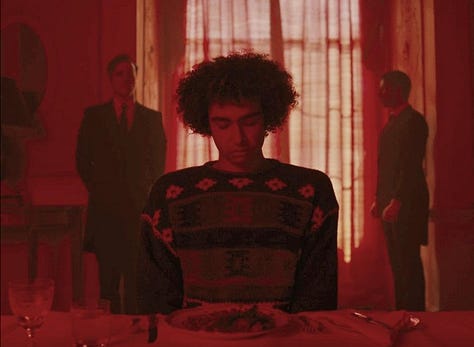
A Greek Tragedy
From the very first minute, Saltburn draws striking similarities to Greek Mythology and the works of Shakespeare – starting with the classical fairy tale font that sets the stage. This parallel unfolds progressively and reaches its climax during the gigantic A Midsummer Night’s Dream-themed party – a play, written by the great Mr. Shakespeare himself. Each costume undoubtedly holds its own deeper meaning drawing inspiration from A Midsummer Night’s Dream. Unfortunately, I don’t have the time to analyse each and every costume, but I’d bet good money that countless deep dives and articles exploring this aspect are circulating the internet as we speak.
On to the next detail I want to get into: the minotaur statue in the middle of the maze – and the possible significance behind it. Granted, I could be making this thing up and spreading misinformation but I’m pretty sure that in one of the many Saltburn analyses (kind of hard to keep track, given the vast amount of content I’ve consumed on this film) it was mentioned that the statue was quite literally modelled after Barry Keoghan’s body. If this holds true, then I’m sorry, but case closed – this would obviously suggest that Oliver represents the nefarious minotaur, a force that causes the demise of a fallen angel aka Felix… or does it? Frankly, I’m not even sure what to think anymore because I’ve immersed myself in way too many conflicting theories that forming a definite opinion is challenging at this point. Nevertheless, I will say that I’m obsessed with the film’s Greek Tragedy atmosphere, in which almost every major character meets a tragic, deathly end.
Congrats – You’ve Made It To The End!
Do you know what truly elevates a movie and makes it phenomenal? A closing scene that won’t leave your mind and offers new layers to analyse with each revisit. Back it up with a catchy song and you’ll have yourself a hit. In my opinion, Saltburn perfected that formula. I would love to link the video below, but Barry Keoghan’s naked (I’m talking full frontal) appearance in the scene prevents its availability on YouTube.
Here’s the rundown: after successfully killing the previous residents of Saltburn, Oliver celebrates his dark victory in a rather… interesting way – by gracefully dancing through the now-empty residence accompanied by Sophie Ellis-Bextor’s Murder On The Dancefloor. Here are some things I took notice of (or saw online – I suppose I can’t take credit for it all): I feel like everyone and their mother has talked about the first one, I am going to mention the symbolism in Oliver’s dance route – it just so happens, that his little dance perfectly mirrors the reverse order of the tour Felix gave Oliver upon his initial arrival at Saltburn, creating yet another parallel between the two.
Adding to the intrigue, Oliver’s dance incorporates rather theatrical elements, almost as if he’s performing for the mansion itself – maybe in an effort to prove himself worthy of living there. What elevates this detail further is the occasional striking of poses that mirror those of Greek statues – a subtle nod to the persistent themes of Greek mythology perhaps? Noteworthy here is the symbolism of Oliver’s nakedness as well as his rather muscular figure, akin to the idealized bodies seen in ancient Greek statues. This could be a subtle commentary on Oliver’s warped perception of himself, acting as the hero of his own story. But then again, in the end, he manages to fulfil his goal and becomes the heir of Saltburn, so really, who am I to judge?
Why So Salty?
I’ve already acknowledged the criticism toward Saltburn, being deemed “all style and no substance”, with some comparing it unfavourably to movies like Parasite and Triangle of Sadness in addressing classism and societal critique. Well, allow me to offer you my own take on this matter. Number one: if my fondness over Saltburn suggests a preference for the aesthetic over profound meaning, then so be it. That being said though, I strongly disagree with the notion that Saltburn lacks substance. In fact, its cinematography clearly contributes to the depth of it all as the endless number of theories will show you. I love speculating about different little details that only catch your eye after the second or even third rewatch – that’s what makes movies fun. Moreover, the film manages to deliver stunning visuals and outstanding acting performances. What is there to complain about?
Saltburn doesn’t critique social issues in the same manner as Parasite or Triangle of Sadness, and that’s totally acceptable – it’s not trying to. While classism undeniably plays a significant role, the movie centres more on individual characters and the lengths someone is willing to go to achieve their desires. In my humble opinion, this focus adds a unique layer to the narrative setting Saltburn apart. And with that, I rest my case.
As I reflect on things, it seems I said a bunch of words without conveying any substantial meaning – does that make this deep dive “all style and no substance” also? Food for thought.




